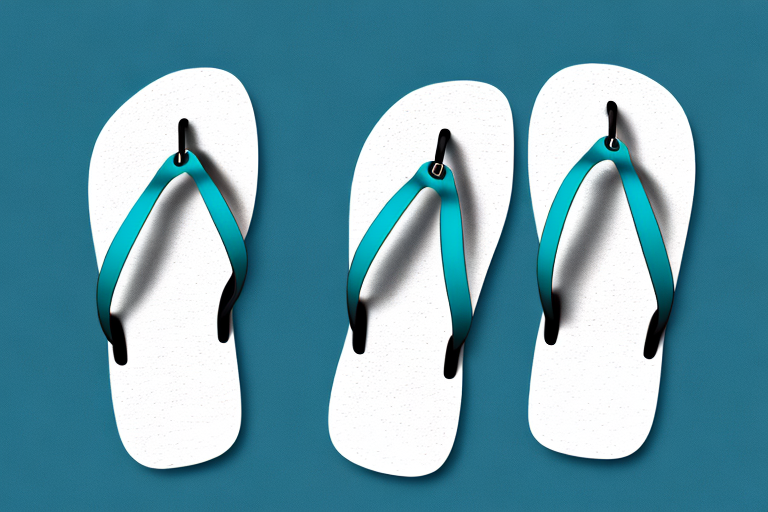When you’re in the market for sandals with straps, you want the ones that will last the longest. That’s why it’s important to understand the differences between materials and determine which type will hold up best over time. This article looks at the various materials that straps for sandals are most commonly made from and takes a deep dive into their properties to identify the best for durability. Read on to get the full scoop.
Identifying the Best Materials for Long-Lasting Sandals
Different materials come with different properties that determine how long sandals with straps will last. When selecting the most durable material for your straps, you should be considering:
- Strength and Stiffness
- Tensile Strength and Abrasion Resistance
- Moisture Content
- Flexibility
- UV Resistance
- Chemical Resistance
The material of the strap needs to be strong and able to withstand tension while allowing some degree of flexibility. It should be able to resist abrasion, moisture, and UV damage without degrading quickly. The strap should also be resistant to oxidation and other chemical reactions that could affect its longevity.
Comparing the Properties of Different Sandal Materials
The most common materials used for straps in sandals are leather, canvas, neoprene, and rubber. Let’s take a look at how each of these materials stacks up when it comes to their durability-related properties:
- Leather: Stiff yet flexible, leather has a high tensile strength and is fairly abrasion-resistant. It is able to hold its shape when wet, although exposure to water should be avoided. Leather straps are susceptible to UV radiation, but with proper care, they can last for a long time.
- Canvas: This lightweight material is rough and durable, with good tensile strength and abrasion-resistance. Unfortunately, canvas straps have little flexibility and will become brittle in sunlight. Canvas is also prone to mold and mildew when exposed to moisture.
- Neoprene: This synthetic material is light in weight yet durable and abrasion-resistant. It is flexible and soft, capable of withstanding extreme temperatures. Neoprene can survive water without sustaining damage, making it a great choice for water activities with your sandals.
- Rubber: Rubber is durable and resists most chemicals. It has excellent tensile strength, good abrasion-resistance, and good flexibility. Although rubber absorbs moisture, it dries quickly. Rubber is also resistant to sunlight, but can become brittle over time.
Analyzing the Benefits of Each Material Type
When it comes to the most durable material for straps on sandals, leather clearly stands out as the best choice. Its stiffness, strength, and ability to resist UV radiation make it ideal for long term use. On the other hand, canvas has excellent abrasion-resistance, but its lack of flexibility and susceptibility to UV radiation makes it less desirable for long-lasting straps.
Neoprene and rubber both offer good durability, but neoprene is softer and better able to stand up to high temperatures. Rubber may absorb water more quickly, but also dries quickly, making it a viable option for water activities with sandals. Keep in mind that regardless of which material you choose, regular cleaning will help maximize its longevity.
Exploring the Latest Technology for Improved Sandal Durability
Technology has advanced significantly in recent years and the sandal industry is no exception. Manufacturers are now utilizing innovative processes like laser-cutting and embossing to strengthen the straps on their sandals and make them more durable than ever before. In addition, advanced coating techniques can help protect the material from water damage and UV radiation while keeping it lightweight.
Examining Wear-and-Tear Tests for Sandals with Straps
To ensure that sandal straps are up to the job of providing reliable support during wear, manufacturers often put them through rigorous wear-and-tear tests. This involves subjecting the straps to various environmental conditions, including exposure to water and UV light, as well as measurements of their tensile strength and flexibility. The results of such tests can help manufacturers identify which materials are more reliable for long-term use.
Investigating Consumer Reviews on Durable Sandal Materials
It can also be helpful to look at customer reviews when seeking durable materials for strapped sandals. Reviews can provide helpful insight into how each material holds up over time compared to others, as well as differences between manufacturers. Pay particular attention to any reviews that compare two or more materials so you can get an idea of which straps are more likely to last longer.
Estimating Expected Lifespan of Strapped Sandals Made from Different Materials
Once you’ve identified which type of material is best for long-lasting sandals with straps, you should also estimate how long you can expect them to last. This will depend on a number of factors including the quality of the material, the thickness of the straps, how often you wear them, how well you take care of them, and your overall foot health.
On average, well-made leather straps should last for several years with proper care. Canvas straps tend to last for several months if properly maintained. Neoprene straps are usually good for a few months before they start to show signs of wear and tear. Rubber straps have better UV resistance but may become brittle over time. To get the most out of your strapped sandals, clean them regularly according to the manufacturer’s instructions.
Summarizing the Results: Which Material Makes the Most Durable Strapped Sandals?
To recap, when looking for the most durable material for strapped sandals, leather is a clear winner. Its combination of stiffness, strength, flexibility, and UV radiation resistance make it a great choice for long-term use. Neoprene or rubber may also be suitable if you’re looking for a more lightweight option that has good flexibility and chemical resistance.
Regardless of which type of material you choose, it’s also important to watch for signs of wear and tear and take steps to ensure your sandals last as long as possible. With proper care and maintenance, you’ll be able keep your strapped sandals in prime condition for longer.



